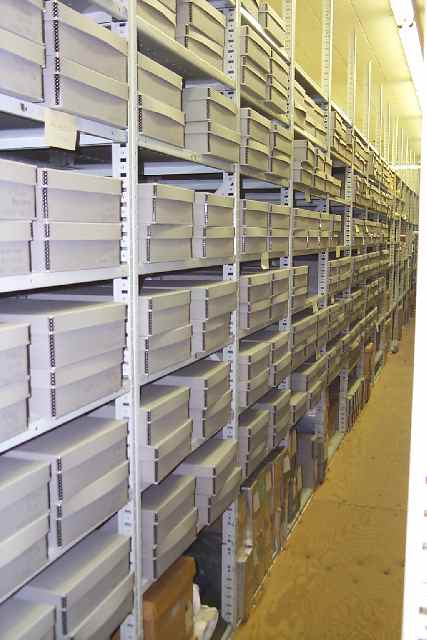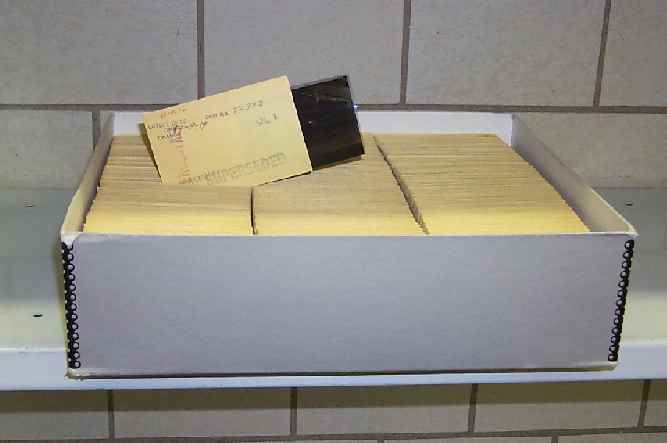
Research Center
Henry Ford Museum and Greenfield Village
Almost everyone in the Model T hobby has heard of the Ford Archives. They know that here the early records of the Ford Motor Company as well as a wealth of information about the Model T can be found there. A few hardy souls have made the pilgrimage to Dearborn and the Research Center at the Henry Ford Museum which now houses all of the Model T documents and drawings donated by the Ford Motor Company. Those researchers work in the reading room at the Research Center, and documents are brought to them from their storage place in the "Stacks". These stacks are "closed" to everyone except HFMGV Research Center staff members and volunteers.
I think that I am the only member of the Model T hobby who enjoys the privilege of a "Stack Pass" at the Research Center. Consequently, I frequently am asked questions about what is it like doing research in the stacks, how I find the story about a particular part or aspect of Model T history. It is sometimes hard to explain to these people why it is sometimes difficult to find the answer to a particular Model T question or information about a specific Model T part. The reason is simply because there is SO much information to look through.
The "Stacks" at the Research Center occupy the old gymnasium in Lovett Hall at the Henry Ford Museum. The room has been divided into two floors and there are seven steel racks that extend from the floor to the ceiling of the gymnasium. The racks are full of document boxes that contain papers, ledgers and microfilm. Along the four walls on both floors are still more racks holding photographic negatives and prints, and bound volumes of periodicals such as "Horseless Age" and "Ford Owner and Dealer".
The principle area of Model T research activity currently is a collection of microfilms known as Accession 1701. This accession is also known as "The De Angelis Collection" after George De Angelis, the dedicated antique Ford hobbyist and author who saved these microfilms from the dempster dumpster. Accession 1701 is one of the largest collections in the stacks. It occupies all of one side of shelves on the second floor and half of the other side. This collection includes all of the microfilms of Model T parts drawings, as well as of the Model T's predecessors and successors. Drawings can also found for the Model A, V8, Ford World War II military products, the trimotor and most other Ford products up to about 1957. It also includes the Ford Motor Company Engineering Releases that describe what was changed on each part and when the change was authorized.(see also: Releases)
Here are a few glimpses into the stacks at the Research Center.

This is a view of one the rows of shelves on the second floor of the
stacks. This row holds about two-thirds of Accession 1701. The gray boxes
on the first shelves on the left hold the Model T parts drawings - all
72,000 of them! The brown boxes just to the right hold the 1928-31 Model
A drawings. Just past that are the drawings for the V8 Fords, and further
down are WWII Jeep and the Ford Trimotor airplane.

Here is the rest of Accession 1701. Here are the engineering releases
or "Record of Change" cards that tell what was changed and when for each
Model T, A and V8 part.

Here is a view of on of the 40 boxes of Model T parts drawings. There are about 1500 pieces of microfilm in each of these boxes. Each piece of film is kept in a little brown envelope. The envelope that is pulled out holds the drawing for T-333 Rear Spring assembly dated May 19, 1916 - the taper leaf rear spring.
The Research Center is open for research from 9 AM to 4:30 PM Monday through Friday. It is important to contact the Research Center in advance of a visit so that the staff can arrange to have the materials you are interested in ready when you arrive. Appointments can be made by contacting:
The Research Center
Henry Ford Museum and Greenfield Village
P O Box 1970
20900 Oakwood Blvd.
Dearborn, MI 48121-1970
You can also visit their web page at: Research
Center
Last Updated: 1/1/Y2K